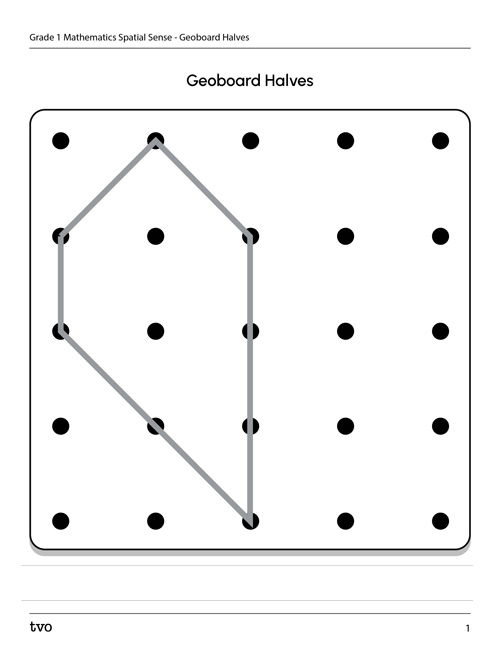Minds On
Notice and wonder

A line has been drawn to split different items.
Examine the following chart with all the items.
|
Group 1 |
Group 2 |
|
|
|
There is a table with two columns. The first column is called Group 1 and the second column is called Group 2. Group 1 shows an acorn, a red barn, a 4-leaf clover, a button, a bunny’s head, and one pair of scissors. There is a dotted splitting each item into two equal parts. In Group 2, there is a curved arrow, a beaver, a set of three balloons, a coffee mug, and a boot. There is a dotted line splitting each item into two unequal parts.
Brainstorm
Brainstorm
Consider the following questions. If possible, share your thinking with a partner.
- What do you notice about how the items have been split?
- Why are the items in two different groups?
- Can you think of a rule for how the items have been grouped?
Action
Matching halves

When an object is split in half it can either have matching halves or not matching halves.
|
Matching halves:
|
Not matching halves:
|
Let’s re-examine the items from the Minds On section.
|
Group 1 |
Group 2 |
|
|
|
Group 1:
- has matching halves
- both sides are the same size
- both sides are the same shape
If we were to fold on the dotted line, the two sides will match exactly.
Group 2:
- does not have matching halves
- both sides are different sizes
- both sides are different shapes
If we fold on the dotted line, the two sides will not match exactly.
Matching or not matching
Let’s play a game!
Examine the following items and decide if they have matching halves or not matching halves.
Select the correct answer, then press “Check Answer” to see how you did.
Practice
Let’s sort some objects!
Examine the following objects.

Decide which objects have:
- matching halves
- not matching halves
Record your thinking using a chart or another method of your choice. You may use pictures, drawings, words, or another method of your choice to represent the objects.
Press ‘Answer’ to access a chart with the objects sorted.
|
Matching halves |
Not matching halves |
|
|
|
Student Success
Think
What are some other examples of objects that have matching halves?
Consolidation
Construct matching halves

Task 1: Shapes with matching halves
Examine the following geoboards. One half of each shape has already been made.


- Can you describe or create the matching half?
- How will you know if the new half is matching with the other half? How could you check?
You may also access the geoboards using the following printable document.
Task 2: Everyday objects with matching halves
Find an object in your classroom, home or community that has matching halves.
- Describe the object or create a drawing of it, if possible.
- Explain how you know it has matching halves.
Reflection
How do you feel about what you have learned in this activity? Which of the next four sentences best matches how you are feeling about your learning? Press the button that is beside this sentence.
I feel…
Now, record your ideas about your feelings using a voice recorder, speech-to-text, or writing tool.



















